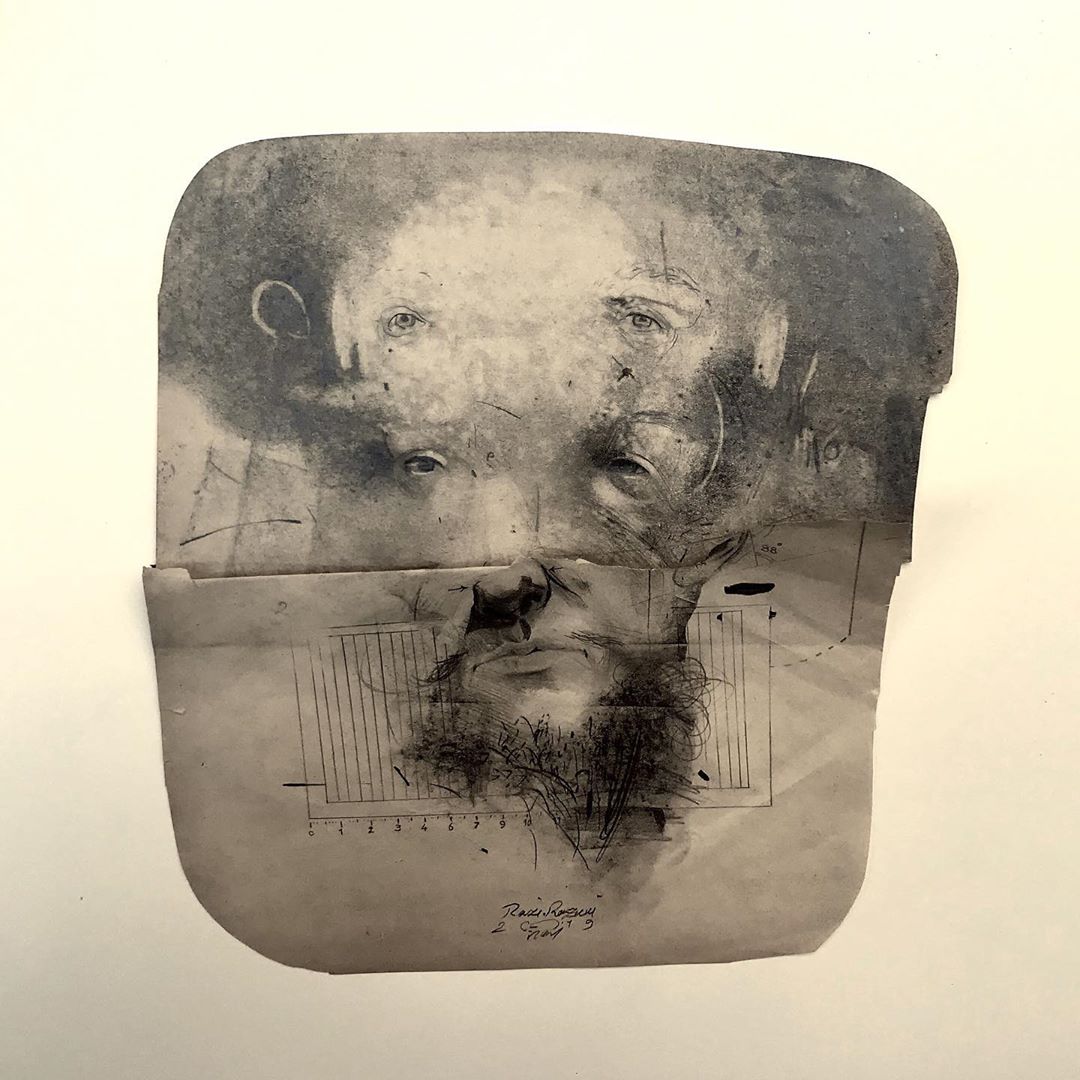
As we are living in a digital age, it’s safe to say that typewriters are an artifact of the past. But for Rachel Mulder, an artist living in Portland, Oregon, the classic typing machine still proves to be an important creative tool. With a meticulous eye, and even more patience, Mulder uses her typewriter as a way to “draw” from old photographs, keystroke by keystroke. “There is something so special in the error of the human hand,” she says, “-that I enjoy while conversely and fretfully attempting to attain perfection.”

Using a limited number of symbols, Mulder is able to create facial detail and shading in her portraits with remarkable precision, much like an etching. One of the most striking characteristics of her typewritten images is her palette, ranging from black and white tones to the four-color method used in commercial printing: magenta, cyan, and yellow carbon on paper. It’s a time-consuming, and admittedly obsessive, process that she says embraces “the happy accident coveted in traditional printmaking.”

She explains: “By using a grid and a photograph, each image in this series was recreated and transformed in a methodical manner square-by-square, bottom to top, using a variety of media offering some form of control. This was accomplished by the tool itself, such as a uniform rubber stamp, or actively drawn, like repeated hand-drawn triangles. By treating each individual segment as its own drawing, separate from yet part of the greater whole, the resulting image, though recognizable, is simply a buildup of repetitive marks.”














 Jim Carrey's politically charged drawings fill the exhibition "This Light Never Goes Out," currently running at the Phi Center in Montreal. Known as a comedic legend on the screen, Carrey has shared his personal visual art practice on social media since 2016. The artist often depicts current political figures in his drawing, commenting on everything from the President's border policies to the marriage of George and Kellyanne Conway.
Jim Carrey's politically charged drawings fill the exhibition "This Light Never Goes Out," currently running at the Phi Center in Montreal. Known as a comedic legend on the screen, Carrey has shared his personal visual art practice on social media since 2016. The artist often depicts current political figures in his drawing, commenting on everything from the President's border policies to the marriage of George and Kellyanne Conway. On scraps on paper, the drawings of Turkish artist Razi Razavi seem to apparate in a ghostly manner, the artist’s sparse details having both uneasy and captivating effects. Each visage carries its own, private narrative, yet many stare directly into the viewer’s eyes. As you’lll see below, the artist’s practice also extends to painting, yet maintains similar qualities.
On scraps on paper, the drawings of Turkish artist Razi Razavi seem to apparate in a ghostly manner, the artist’s sparse details having both uneasy and captivating effects. Each visage carries its own, private narrative, yet many stare directly into the viewer’s eyes. As you’lll see below, the artist’s practice also extends to painting, yet maintains similar qualities.
